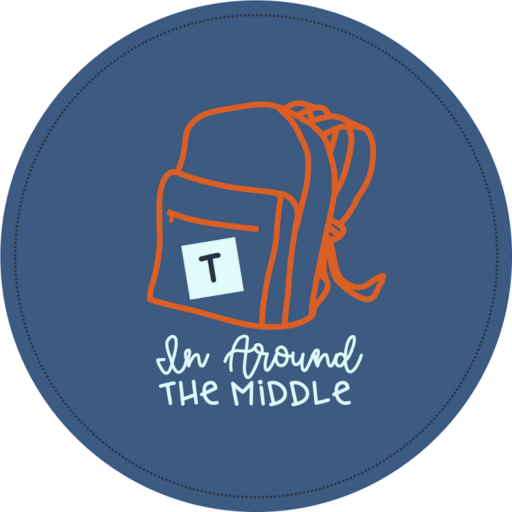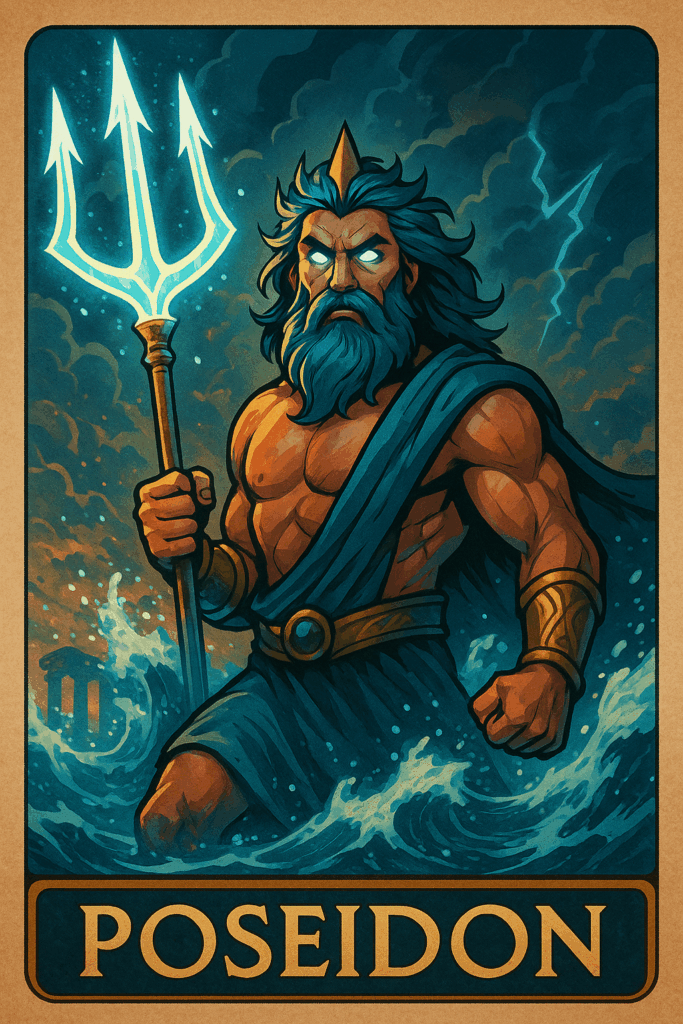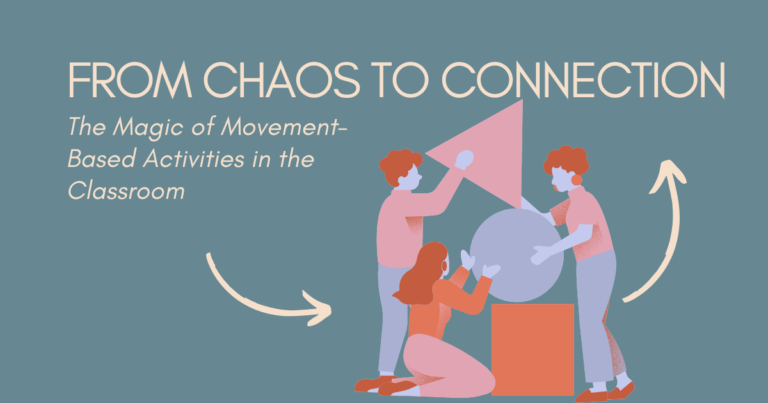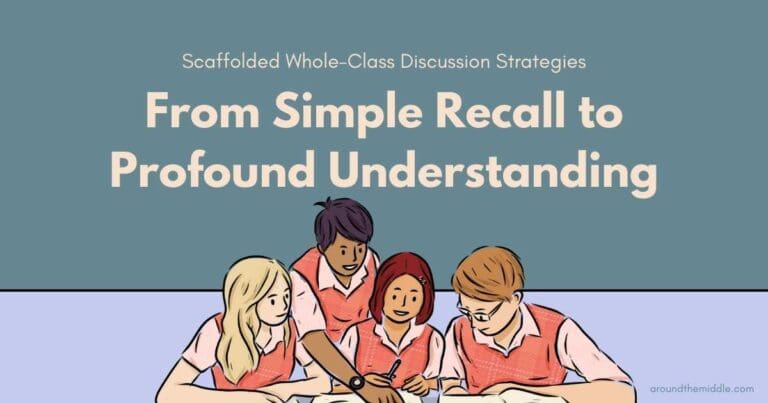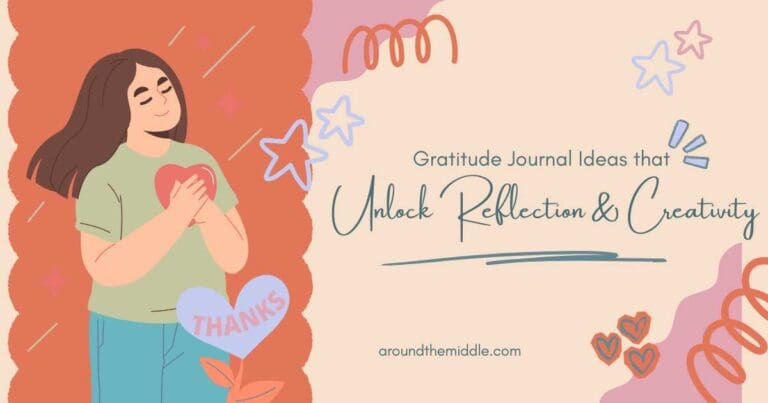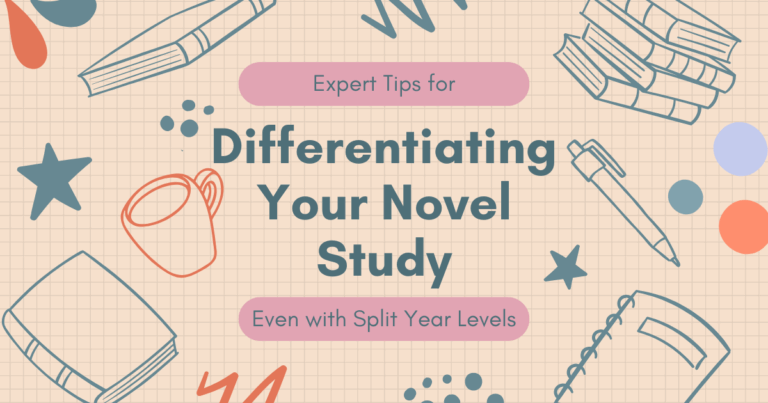Transform pre-reading activities with these creative and powerful ideas
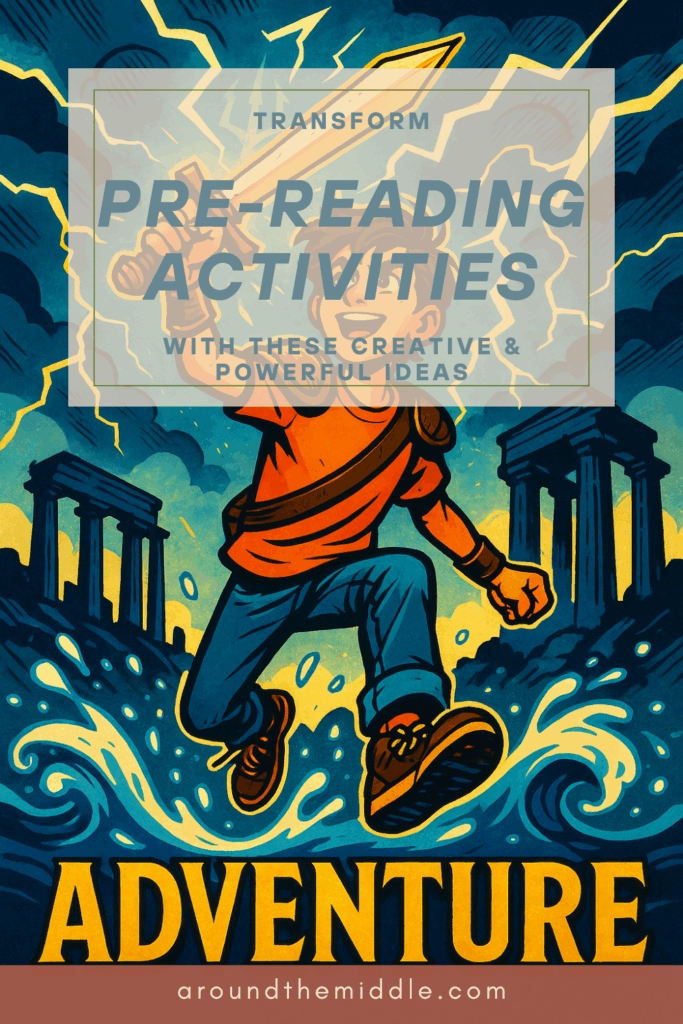
You know the feeling—new novel, fresh unit, and you’re hoping to hook even your most reluctant readers. The trick? Don’t dive into chapter one cold. Give them a reason to care before the book begins with engaging pre-reading activities.
Here are seven pre-reading activities I’ve used (and loved) to build background knowledge, spark curiosity, and get kids talking. They’re easy to implement, require little prep, and most importantly—students actually enjoy them.
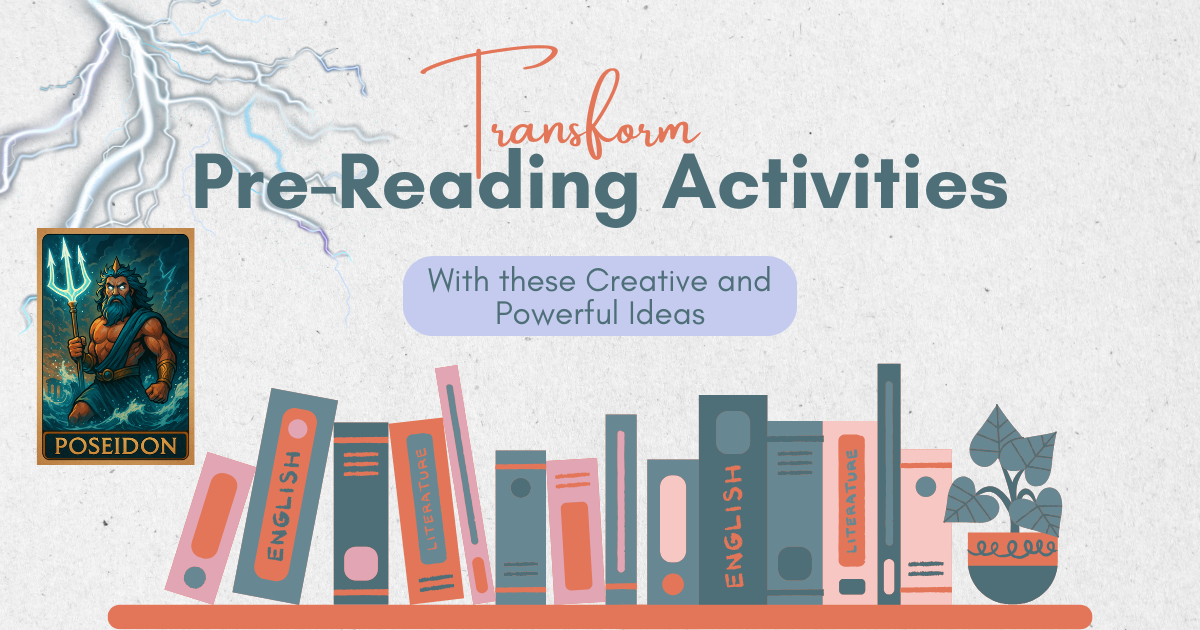
1. Pre-Reading Scavenger Hunt Activities (Movement + Background Knowledge)
These are always a hit for pre-reading activities. Students rotate through reading cards placed around the room. Each card has a short, engaging paragraph that connects to the novel’s theme, or historical background—and ends with a question that leads them to another card.
Why it works:
- It sneakily gives students useful background info they’ll need to understand the story.
- They love moving from card to card, helping each other figure things out, and trying to be the first to crack the final code or solve the puzzle.
- They’re reading on purpose—which builds better comprehension from the start.
- It builds excitement and anticipation for the novel.
Looking for pre-reading topic ideas? For the Twits I did the history of practical jokes, for Percy Jackson I did information on the Greek gods. You can make your own version or grab one of mine and just print, cut, and hang!
2. AI-Generated Movie Poster (Prediction + Visual Inference)
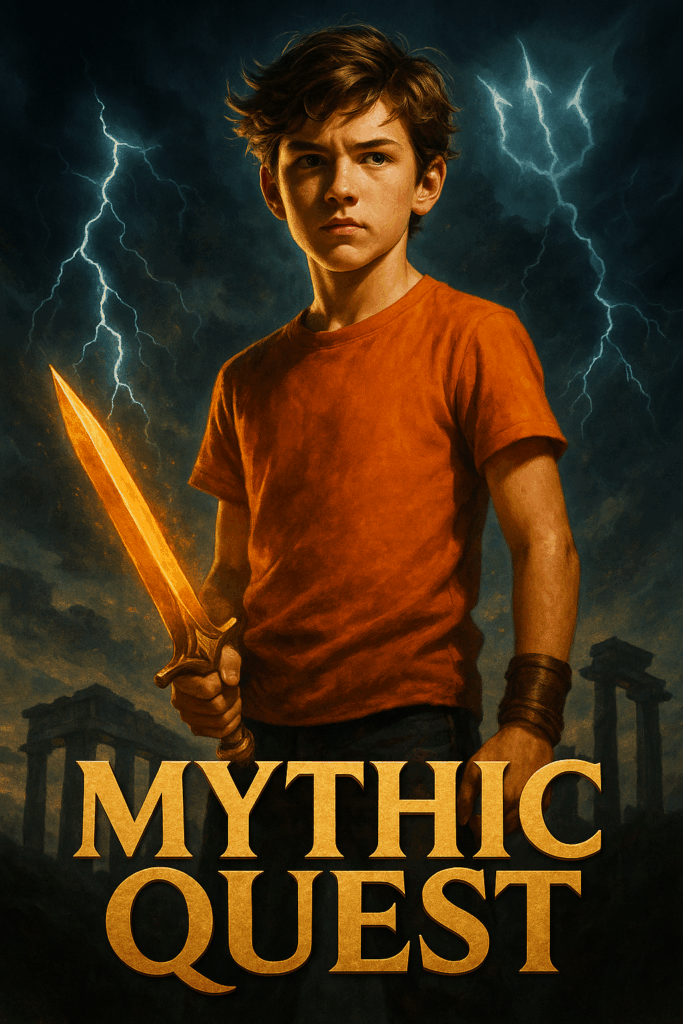
Here’s a fun twist for your pre-reading activities if you don’t have time to create a scavenger hunt. Use AI to create a movie-style poster for the book, like the one I made here, inspired by Percy Jackson. Then ask students:
- Who do you think this character is?
- What’s the setting like?
- What kind of world or setting does this story take place in?
- What do you think will happen in this story?
You can make a poster using tools like Canva, Adobe Firefly, or Bing Image Creator—just type in a few prompts. You could even generate a few different posters and let students vote on which one they think best fits the story. Great for discussion, predicting, and mood-setting! Not sure what kind of prompts to put in? I’ve got you covered for a few different ideas, including this one and the cards below, in my freebie here.
3. AI Character Cards (Build Curiosity + Infer Traits)
Before they meet the characters in the book, let students imagine them. Use AI-generated images with student-friendly AI tools like Canva, or have students draw their own, and create trading cards with:
- Name and role
- Predicted character traits
- A “special skill” or symbolic item
- One question they have about the character
These can hang on a character wall or go into notebooks. Then, as you read, students update their cards and compare how close their predictions were. If you wanted to create some yourself to help hook students pre-reading, you could also use them for students to guess the genre of the novel or role of the character. There’s endless possibilities with this one. They could even become trading cards or reward cards throughout the novel!
4. Novel Debates Pre-Reading Activities (Theme + Perspective Taking)
This activity gets students moving and thinking. Put a debatable statement on the board based on the themes and events in the novel, and have students physically move to the “agree” or “disagree” side of the room. Then, they explain why.
Not sure what kind of prompts to use? Here’s some I used with Percy Jackson pre-reading activity:
- “Power inevitably leads to corruption.”
- “It’s okay to break promises if it protects someone you love.”
- “Destiny is fixed at birth.”

Why it’s powerful:
- It introduces key themes in a way that’s personal and engaging.
- You can revisit the same statements during or after the novel to explore how their views have changed.
Want to go deeper?
You can revisit these same statements after reading to explore how their opinions changed. Here’s what I use:
- 20 debatable statements
- ‘What-if?’ extensions for each statement to get them thinking
- Individual follow-up writing activities justifying opinions
- Pre, during, post reading activities on the statements showing thinking and justification
- Tie-ins to persuasive writing
Perfect for building connections to theme, character choices, and author intent. You can absolutely build your own. No time? Find the full debate resource here.
This ties perfectly into argument writing standards, speaking & listening practice, and theme analysis.
5. Time Capsule Predictions (Creative Writing + Reflection)
Have students write a letter to themselves before starting the book. They predict what the story will be about, who they’ll like, what might happen, and how they expect it to end.
You can even include:
- A sketch of a possible scene
- A mood or emotion scale
- A “three things I expect” list
Seal it in an envelope or store it in a digital folder, then revisit it at the end of the unit. This is a great way to bookend your study with reflection.
6. Explore the Setting (Context + Visualisation)
Use Google Earth images (for real-world settings), virtual tours, AI-generated scenes to show the novel’s setting—especially helpful for dystopian, historical, or fantasy books, or photos and paintings tied to the time/place. Then ask students:
- What challenges would someone face here?
- What kind of story would fit this place?
- Would you want to live there? Why or why not?
This helps them step into the world before they meet the characters, giving context that makes the first few chapters much easier to understand.

7. Thematic Playlist Challenge (Music + Mood)
Create a short playlist to play in the background of any of the above activities (just make sure you get ‘clean’ versions!), letting them know that its intended to match the mood and journey of the story, or even tie ins with symbols and characters. For Percy Jackson I used:
- Riptide by Vance Joy
- Warriors by Imagine Dragon
- Ocean Eyes by Billie Eilish
Then, as you read the novel, let students create a their own short playlist of songs that they think match the tone or emotional journey of the novel. Even just 3–5 songs can open up rich discussion.
Prompt them with:
- “Pick a song that captures the story’s mood.”
- “Choose a song for a major turning point.”
- “What’s your ‘main character anthem’?”
They can write a short rationale or share their list in small groups. This is especially great with upper grades or classes who love music and mood.
Wrapping It Up
Whether you go with a hands-on scavenger hunt, an AI poster reveal, or a heated classroom debate, these activities make your class novel feel like something worth diving into—not just another assignment.
You can grab ready-to-go pre-reading activities (like scavenger hunts and debate packs) in my TPT store, or try making your own with your students’ interests in mind. While you’re at it, grab my free figurative language pack that can be used with any novel.
Have a favorite way to kick off a novel? Drop it in the comments—I love collecting new ideas!
Happy teaching
